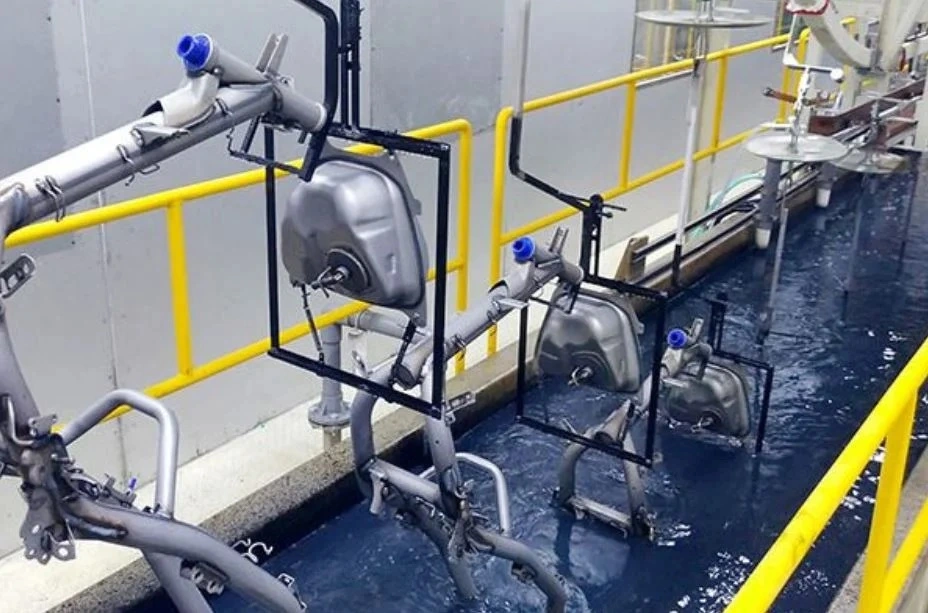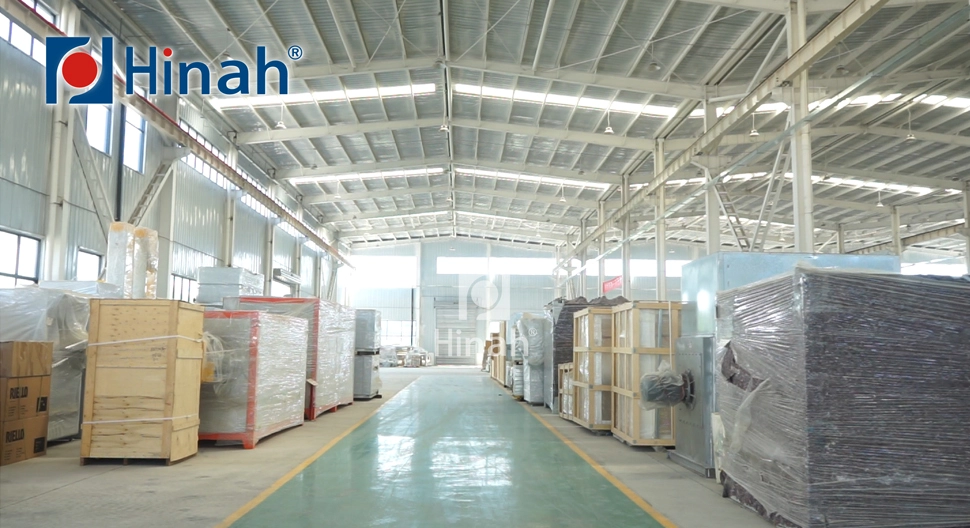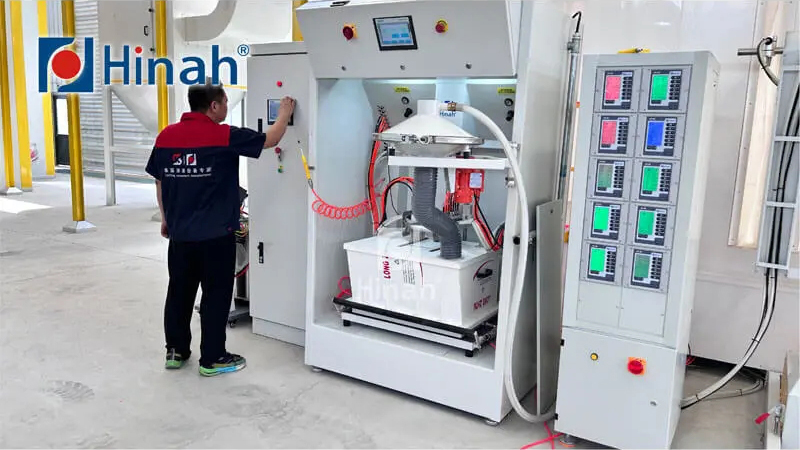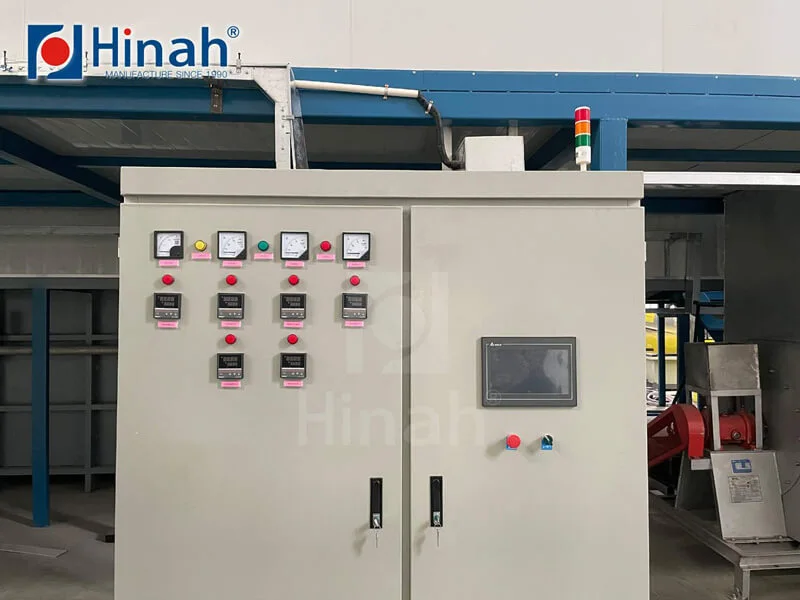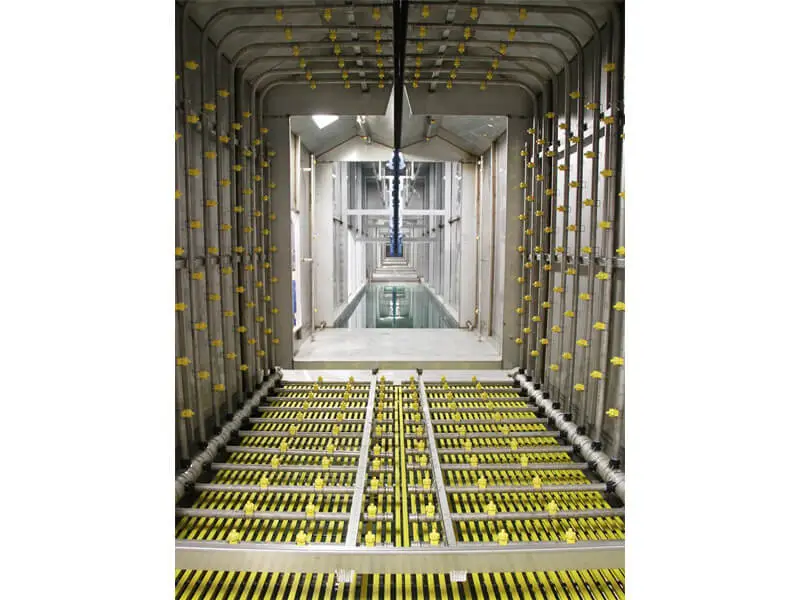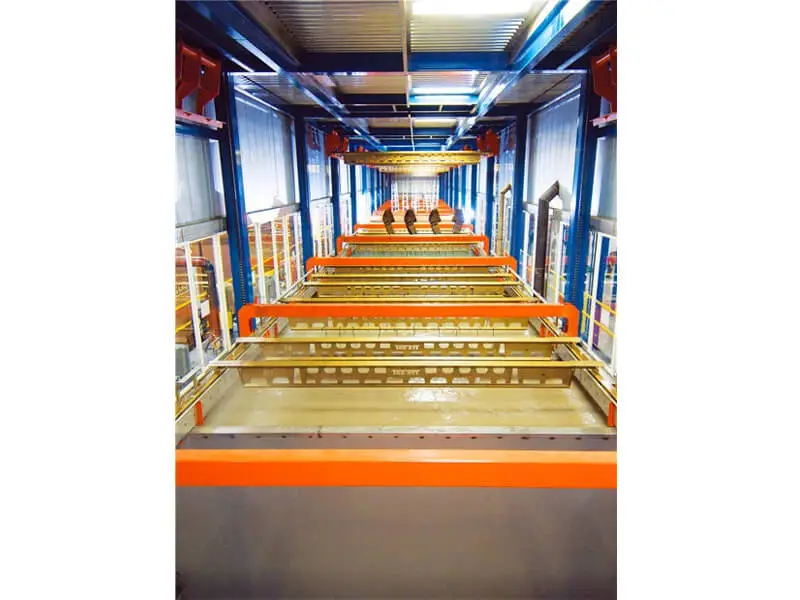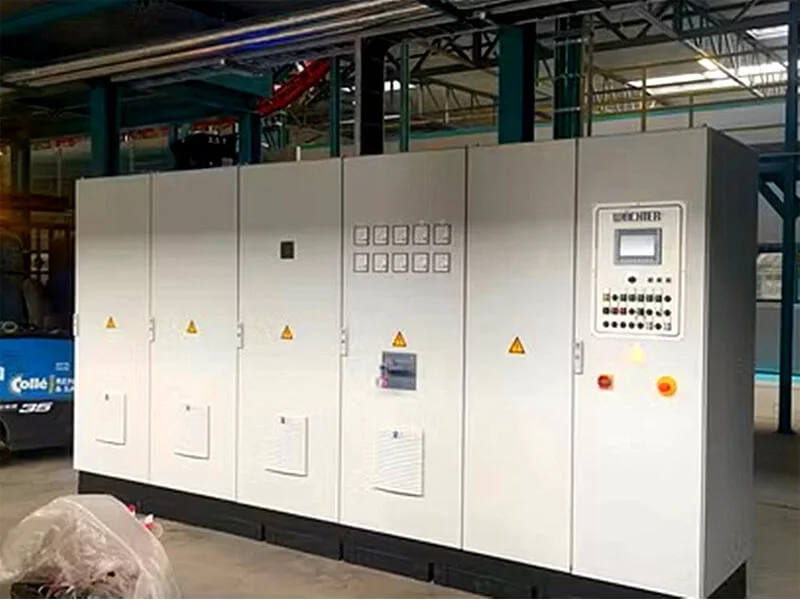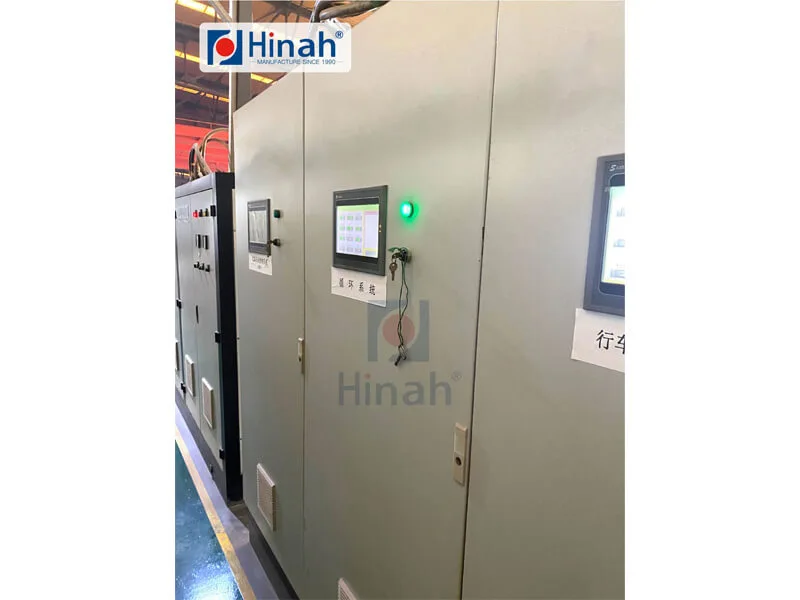In today's competitive industrial landscape, efficiency and precision are paramount. Manufacturers are constantly seeking ways to streamline operations, reduce costs, and enhance product quality. One technology that has revolutionized the painting and coating industry is the automatic paint robot. This innovative solution not only automates repetitive tasks but also delivers consistent, high-quality finishes that are difficult to achieve manually. In this article, we'll explore the significant advantages of integrating an automatic paint robot into your workflow, with a focus on how HANNA's cutting-edge systems are setting new standards. Whether you're in automotive, aerospace, or furniture production, understanding the impact of these robots can help you stay ahead of the curve.

What Is an Automatic Paint Robot?
An automatic paint robot is a programmable robotic system designed to apply paints, coatings, and finishes to various surfaces with minimal human intervention. These robots use advanced sensors, software, and mechanical arms to execute precise movements, ensuring even coverage and reducing material waste. Typically, they are integrated into production lines where they can handle tasks such as spraying, dipping, or brushing, depending on the application. The rise of Industry 4.0 has further enhanced these systems, allowing for real-time adjustments and data analytics. For instance, HANNA's automatic paint robot models incorporate AI-driven algorithms that adapt to surface variations, making them ideal for complex projects. By automating this process, businesses can achieve higher throughput and better resource management, all while maintaining a safe working environment.
How Automatic Paint Robots Improve Efficiency and Productivity
One of the primary reasons companies adopt an automatic paint robot is to boost efficiency. Manual painting processes are often time-consuming and prone to inconsistencies, leading to rework and delays. In contrast, an automatic paint robot can operate continuously without fatigue, significantly speeding up production cycles. Studies show that implementing an automatic painting system can reduce painting time by up to 50% in many industrial settings. For example, HANNA's automatic paint robot series features high-speed actuators that complete tasks in a fraction of the time required by human workers. This not only increases output but also allows employees to focus on more value-added activities, such as quality control and design. Moreover, these robots can be programmed for multiple shifts, ensuring round-the-clock operation without compromising on quality.
Enhancing Quality and Consistency with Robotic Painting
When it comes to finishing applications, consistency is key. Even the most skilled human painters can introduce variations due to factors like fatigue or environmental conditions. An automatic paint robot eliminates these inconsistencies by following precise programmed paths and applying coatings with uniform thickness. This results in a flawless finish that meets strict industry standards, such as those in automotive or electronics manufacturing. HANNA's automatic paint robots, for instance, use vision systems to detect surface imperfections and adjust spraying parameters accordingly. This level of precision reduces defects and minimizes the need for touch-ups, ultimately saving costs on materials and labor. Additionally, by maintaining consistent quality, businesses can enhance customer satisfaction and build a reputation for reliability.
Cost Savings and Return on Investment
While the initial investment in an automatic paint robot might seem high, the long-term cost savings are substantial. By reducing material waste through optimized spray patterns and minimizing human error, companies can lower their operational expenses. For example, an automatic painting robot typically uses up to 30% less paint compared to manual methods, thanks to its efficient application techniques. HANNA offers flexible financing options and ROI calculators to help businesses evaluate the benefits, with many users reporting a full return on investment within 12–18 months. Furthermore, these systems reduce labor costs by automating tasks that would otherwise require multiple workers. Over time, the savings in training, wages, and overhead contribute to a healthier bottom line, making an automatic paint robot a smart financial decision for growing enterprises.
Applications Across Various Industries
The versatility of an automatic paint robot makes it suitable for a wide range of industries. In the automotive sector, these robots are used for painting car bodies, parts, and accessories, ensuring a sleek, durable finish. Aerospace companies rely on them for coating aircraft components, where precision is critical for safety and performance. Similarly, in the furniture and woodworking industry, an automatic painting robot can handle intricate designs and large volumes with ease. HANNA's solutions are customizable to fit specific needs, whether it's for heavy machinery, consumer goods, or architectural elements. By adopting this technology, businesses can adapt to market demands and scale their operations efficiently. Case studies from HANNA clients highlight how integrating an automatic paint robot led to a 40% increase in production capacity while maintaining high environmental standards.

Comparison: Automatic Paint Robot vs. Manual Painting
When comparing an automatic paint robot to traditional manual painting, the differences are stark. Manual painting depends heavily on operator skill, which can lead to inconsistencies and higher rejection rates. In contrast, an automatic paint robot delivers repeatable results, even in complex geometries. Safety is another major factor; manual painting exposes workers to hazardous fumes and repetitive strain injuries, whereas robots operate in enclosed environments with built-in ventilation systems. HANNA's automatic paint robots also feature user-friendly interfaces that simplify programming and maintenance. Although manual methods might have lower upfront costs, the long-term benefits of automation—such as reduced waste, faster turnaround, and improved workplace safety—make an automatic painting robot the superior choice for modern manufacturing.
Environmental and Safety Benefits
Sustainability is increasingly important in manufacturing, and an automatic paint robot contributes to greener practices. By optimizing paint usage, these systems reduce VOC (volatile organic compound) emissions and minimize hazardous waste. HANNA's automatic paint robots are designed with energy-efficient components and comply with international environmental regulations. Additionally, they enhance workplace safety by isolating operators from direct exposure to chemicals and moving parts. This not only protects employees but also reduces liability and insurance costs. Companies that prioritize eco-friendly initiatives often find that an automatic painting robot helps them meet sustainability goals while maintaining high production standards.
Future Trends in Automatic Painting Technology
The future of automatic paint robots looks promising, with advancements in AI, IoT, and machine learning driving innovation. We can expect smarter robots that self-diagnose issues, predict maintenance needs, and integrate seamlessly with other smart factory systems. HANNA is at the forefront of this evolution, developing next-generation automatic paint robots that offer enhanced connectivity and data analytics. These trends will likely make automation more accessible to small and medium-sized enterprises, further democratizing the benefits. As industries embrace digital transformation, the role of an automatic painting robot will expand beyond painting to include tasks like surface preparation and inspection, solidifying its place as a cornerstone of modern manufacturing.
Why Choose HANNA for Your Automatic Paint Robot Needs?
HANNA has established itself as a leader in robotic automation, with a proven track record in delivering reliable and efficient automatic paint robots. Their systems are engineered for durability, precision, and ease of use, backed by comprehensive support and training services. By choosing HANNA, businesses gain access to innovative features like remote monitoring and customizable software integrations. Testimonials from satisfied customers underscore how HANNA's automatic paint robot solutions have transformed their operations, leading to higher profitability and competitive advantage. If you're considering automation, HANNA offers tailored consultations to help you select the right system for your specific requirements.
In conclusion, integrating an automatic paint robot into your manufacturing process can yield significant benefits, from improved efficiency and quality to cost savings and safety. As technology evolves, these robots will become even more integral to industrial success. By partnering with a trusted brand like HANNA, you can harness the full potential of automation and stay ahead in a dynamic market.
Frequently Asked Questions (FAQs)
Q1: What is an automatic paint robot, and how does it differ from traditional painting methods?
A1: An automatic paint robot is a robotic system that automates the application of paints and coatings using programmed movements and sensors. Unlike traditional manual painting, which relies on human skill and is prone to inconsistencies, an automatic paint robot ensures precise, uniform finishes with less waste and higher efficiency. For example, HANNA's automatic paint robots can adjust in real-time to surface variations, reducing defects and improving overall productivity.
Q2: How much does it cost to implement an automatic paint robot in a factory?
A2: The cost of implementing an automatic paint robot varies based on factors like system complexity, customization, and integration needs. Generally, prices range from $50,000 to $200,000 or more, but HANNA offers scalable solutions to fit different budgets. Many businesses achieve a return on investment within 12–18 months through savings in labor, materials, and reduced rework, making it a cost-effective long-term investment.
Q3: Can an automatic paint robot handle complex or custom-shaped objects?
A3: Yes, modern automatic paint robots are highly adaptable and can be programmed for complex geometries and custom shapes. Using advanced vision systems and software, robots like those from HANNA can map irregular surfaces and adjust spraying patterns accordingly. This makes them suitable for industries such as automotive and aerospace, where precision on intricate parts is essential.
Q4: What maintenance is required for an automatic paint robot?
A4: Regular maintenance for an automatic paint robot includes cleaning nozzles, checking sensors, and updating software to ensure optimal performance. HANNA provides detailed maintenance schedules and remote support to minimize downtime. Typically, routine checks are needed weekly or monthly, depending on usage, and most systems are designed for easy access to components, reducing maintenance time and costs.
Q5: How does HANNA's automatic paint robot support environmental sustainability?
A5: HANNA's automatic paint robots are engineered to minimize environmental impact by reducing paint waste and VOC emissions through efficient application techniques. They comply with green manufacturing standards and often include features like energy recovery systems. By optimizing resource use, these robots help companies lower their carbon footprint and meet regulatory requirements, contributing to a more sustainable operation.


